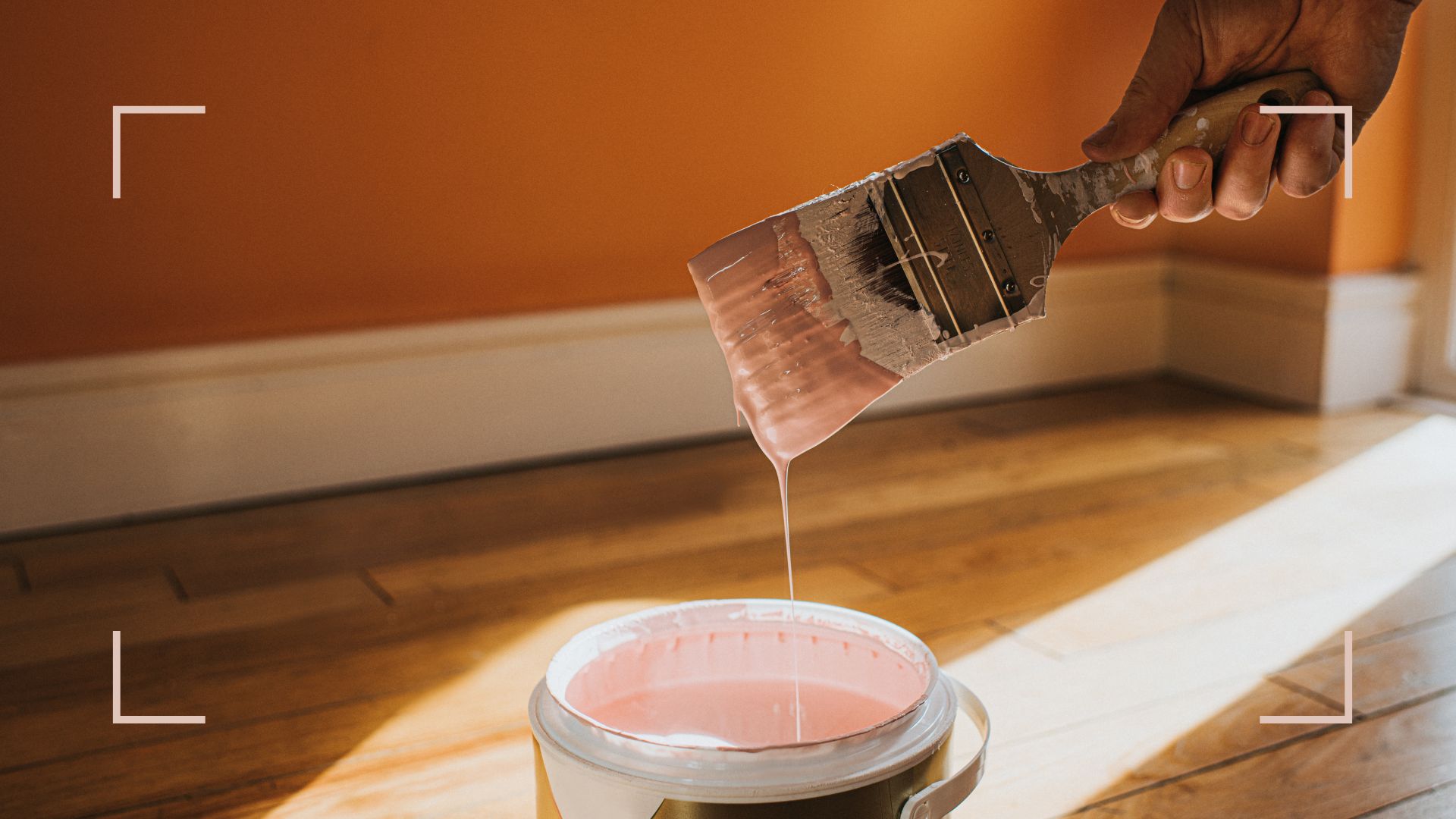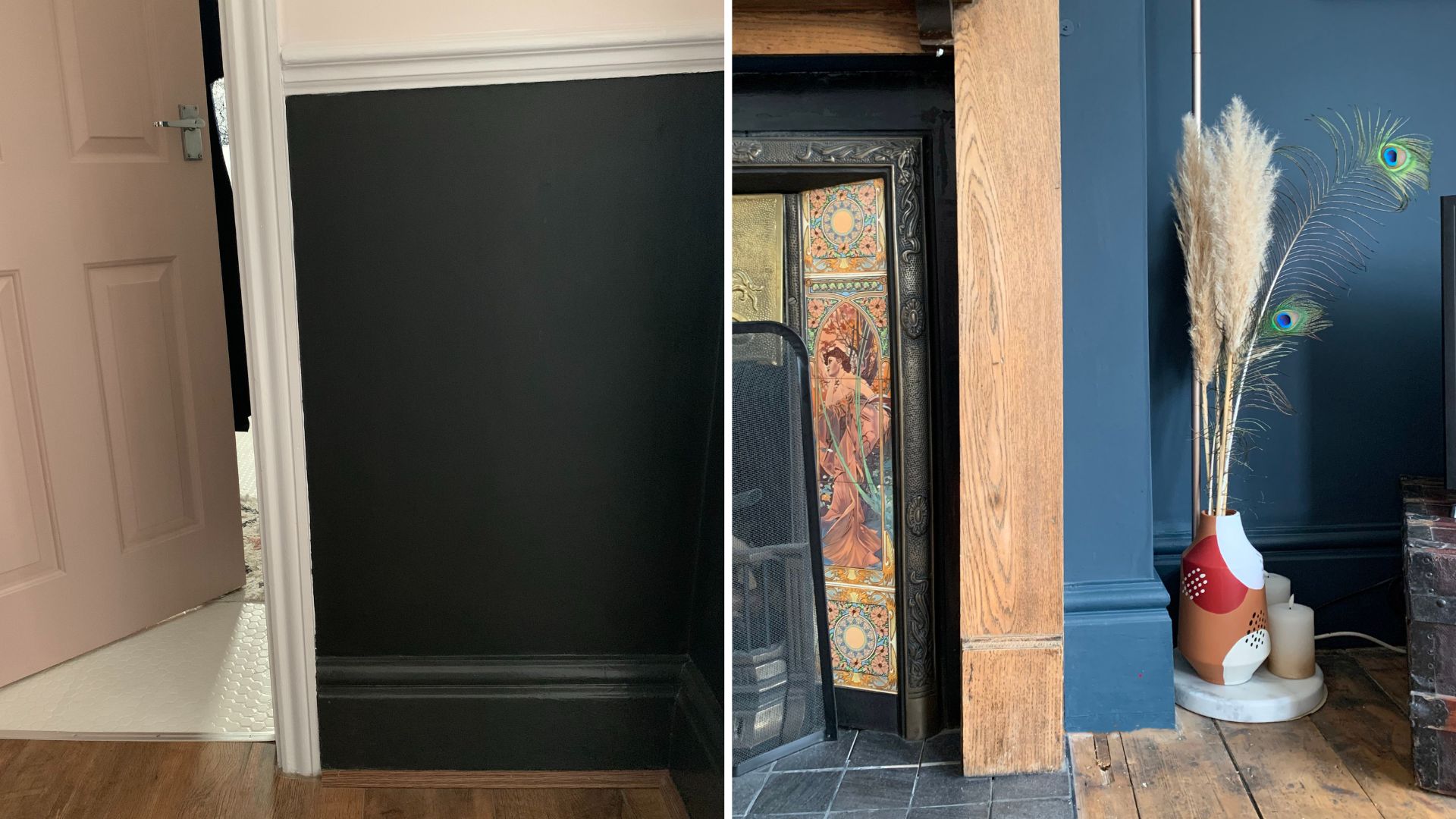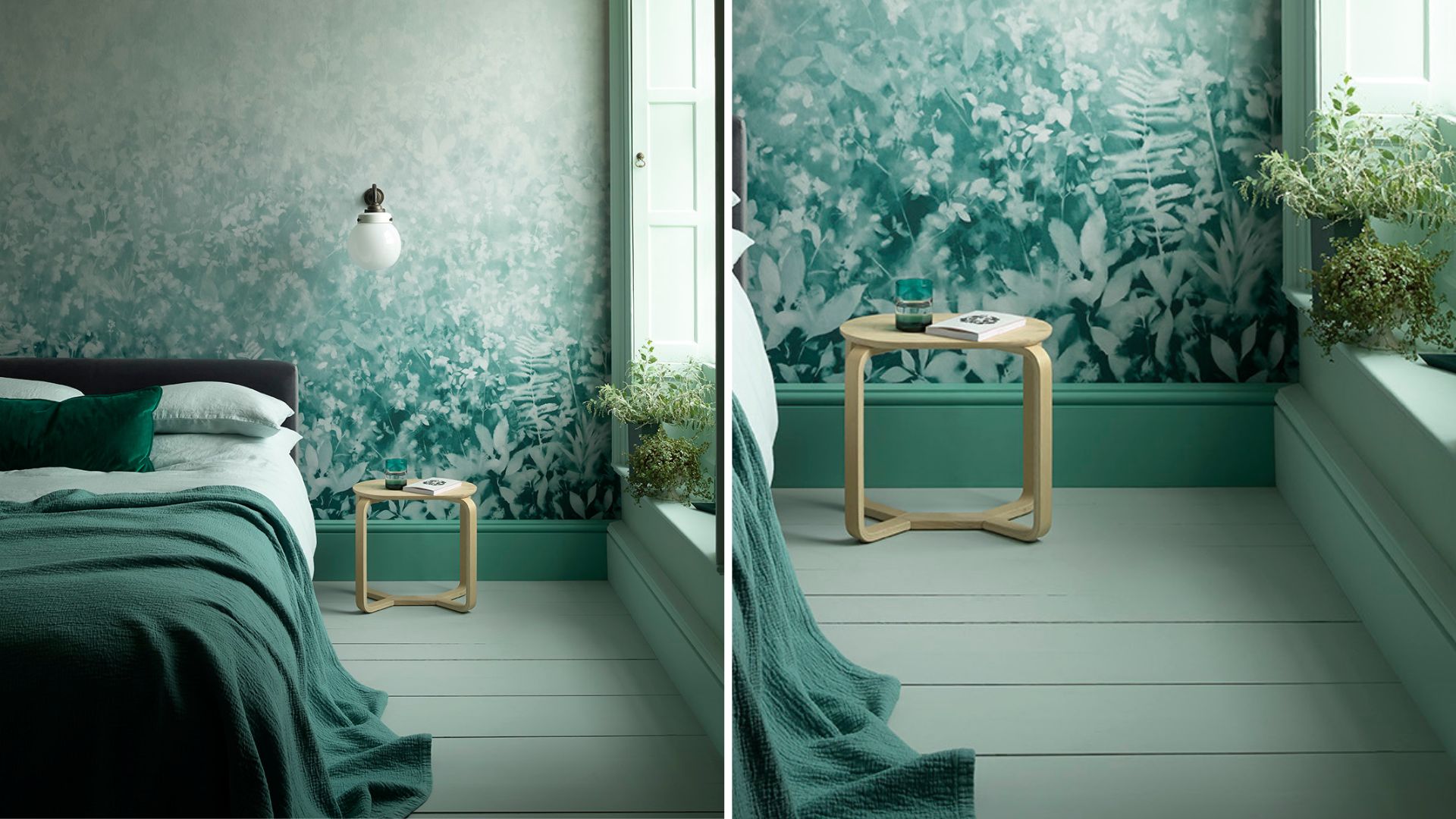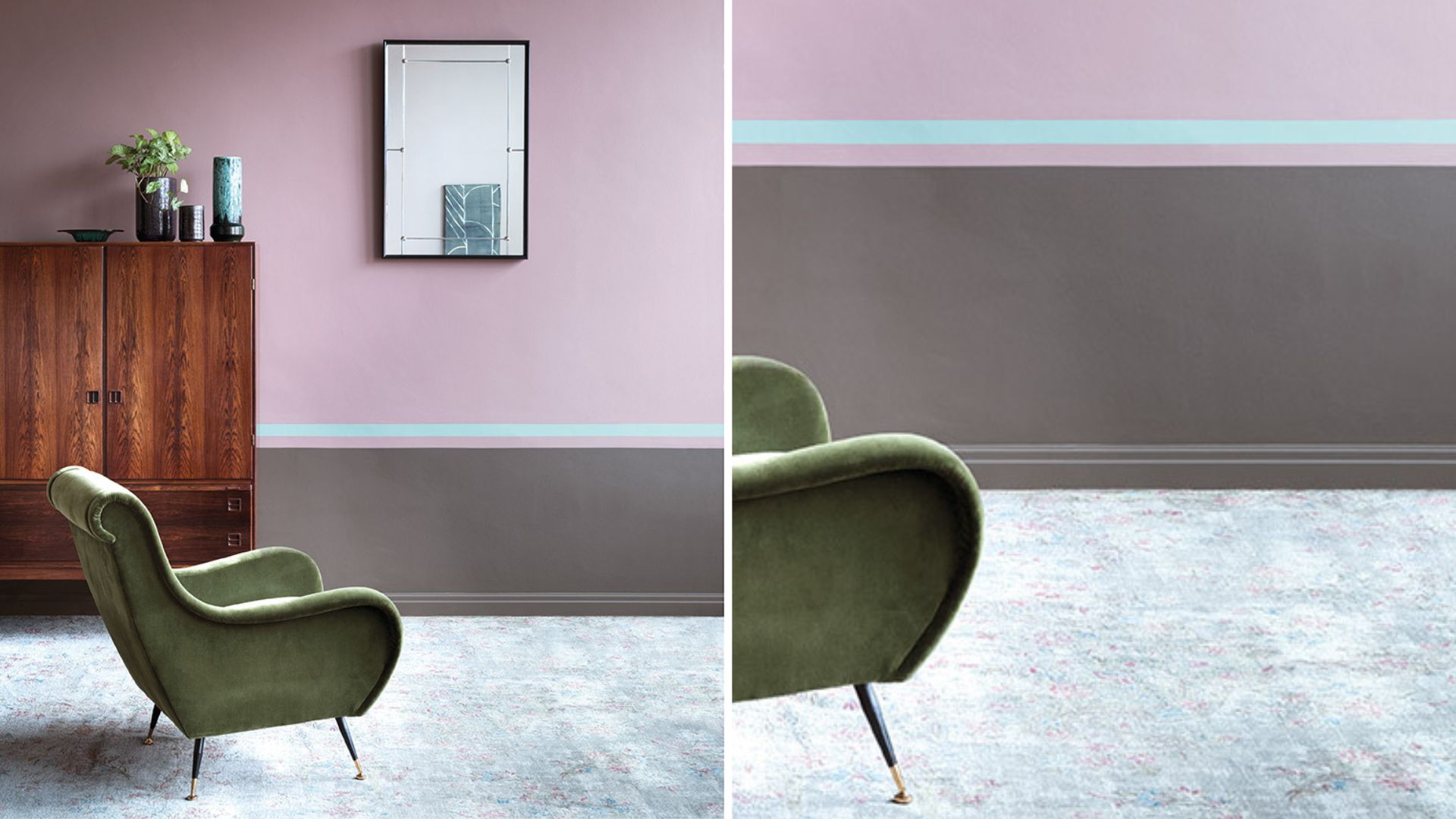This is the colour you should paint skirting boards instead of 'uninspired' white, according to experts
Should we be painting skirting boards the same colour as the walls? Here's what interior designs and colour experts have to say on the matter


There's no definitive answer when asking whether or not you should paint skirting boards the same colour as the walls, but one thing all experts can agree on is that skirting boards shouldn't be painted bright white because it looks 'stark' and 'uninspired'.
Gone are the days when woodwork is always painted white by default. Homeowners are becoming bolder and breaking away from such constrictive conventions by daring to paint skirting boards in alternative colours instead.
Whether painting skirting boards the same colour as the walls or selecting a complimentary interior paint colour trend to match a wallpaper trend, modern skirting boards are being incorporated into the colour palette in a way that even the best white paint colours simply can't match.
Expert opinion: painting skirting boards the same colour as walls
"Very bright whites are not the only option for woodwork and skirting, whilst they can work fantastically in a contemporary setting or monochrome scheme, they can feel stark, cold and uninspired," says Andy Greenall, creative director of Paint & Paper Library.
Speaking exclusively to w&h world-renowned interior designer Kelly Hoppen CBE comments: "Always paint your walls and skirting boards the same colour - it's a timeless approach that allows you to walk into a space and have everything feel seamless."
"Painting them two different colours can disrupt the balance, and although picking things out in white may have been a convention of the past, it’s now quite old-fashioned," says Kelly.
Personally, I too am a big advocate that skirting boards should be painted the same colour as the wall to make the room feel more cohesive. Using the same shade for walls and skirting boards is an easy way to use paint to make a room look bigger by creating a continuous flow where the walls reclaim the height of the skirting boards to extend the perception of the distance from floor to ceiling. That goes for both light and dark colours.
Sign up to our free daily email for the latest royal and entertainment news, interesting opinion, expert advice on styling and beauty trends, and no-nonsense guides to the health and wellness questions you want answered.

My favourite analogy of how jarring white skirting boards can look is one given by Kelly Hoppen on 'This Morning' when she described painting skirting boards white as the equivalent of white socks popping out the bottom of trousers.
Kelly's words were: "When you paint them white it's a bit like wearing a sock and your trouser leg being too high. It kind of looks a bit odd."
This image has stuck with me because it paints the perfect picture of how white can stand out like a sore thumb – ruining the whole decorating scheme.

My own home where the skirting boards are painted the same colour as the walls in every room
However, skirting boards don't always have to match the walls of your living room paint colour or that of your bedroom paint colour, here are some expert suggestions for painting skirting boards in alternative colours to avoid stark white.
Alternative colours to paint your skirting boards
1. Coordinating colour

The walls and woodwork don't necessarily have to match, try a more harmonious pairing than the harsh contrast of white.
"Consider using a lighter version of a colour within your interior palette to highlight your architectural detailing whilst creating a more nuanced and tranquil atmosphere," Andy suggests.
Experts are in favour of the picture rail and ceilings being in a different colour too, While keeping the ceiling paint colour light helps to lift the lid on the room to make it feel airier it doesn't have to be bright white – the notion of nothing but all-white woodwork and trims is an outdated interior design feature.
2. Contrasting colour

Rather than your skirting boards standing out for all the wrong reasons make the contrast more of a stylish intention. Contrast a backdrop of barely-their pale wall colour with a dark, deeper tone for a dramatic design statement.
"For a stronger scheme, use contrasting colours across the walls, panelling and woodwork to highlight structural architectural details," suggests Andy.
"Flip the usual convention of white woodwork on its head and choose a darker colour for your doors and skirting," suggests Farrow & Ball's colour consultant Patrick O’Donnell. "This feels overtly modern whilst not being a slave to trends and can add subtle detail of interest to a room and works in both urban and rural settings."
Patrick continues: "If you have a lighter wall colour, using a much darker colour on your woodwork, including skirtings, can work a treat. This technique helps to make a room feel more spacious, by ‘framing’ the largest surface area with a darker contrast."
3. Softer shades of off-white

If you're keen to keep the look traditional but want an alternative to bright white try simply softening the shade of white.
Look to match the undertones of the wall colour, so if the shade is warm in temperature choose an off-white with red undertones. If the walls are cooler temperatures, for example, sage green or blue choose an off-white with cool blue undertones.
4. Colour-drenching

Follow one of the biggest interior design trends in recent years by colour-drenching the entire room in one shade. Walls, woodwork and even ceilings are uniformly painted in one shade to create the cocooning effect.
This idea is especially popular when decorating with dark colours because the contrast can appear even greater if the woodwork is painted light. “Dark colours look much more modern and dramatic when the woodwork matches," says leading interior designer Kate Watson-Smyth, author of the Mad About The House series of books, and host of an online course at Create Academy.

Tamara is a highly experienced homes and interiors journalist with a career spanning over 22 years. Now the Lifestyle Editor of womanandhome.com, she previously spent 18 years working with the style teams at Country Homes & Interiors and Ideal Home. With these award-winning interior teams, she gained a wealth of knowledge and honed her skills and passion for styling and writing about every aspect of lifestyle and interiors.
A true homes and interiors expert, Tamara has been an ambassador for leading interior brands on multiple occasions, including appearing on Matalan’s The Show and presenting at top interior trend forecasting events such as the Autumn Fair and Spring Fair.